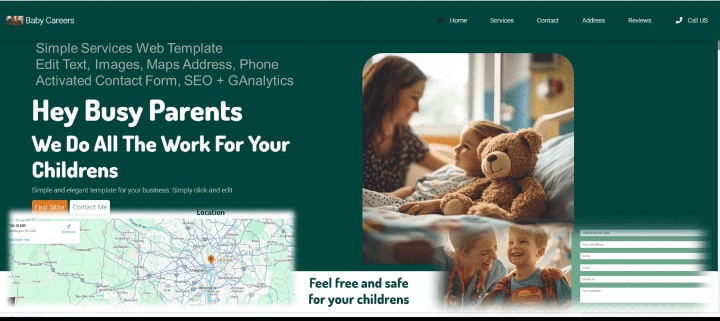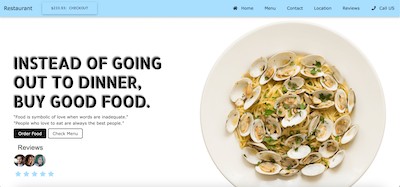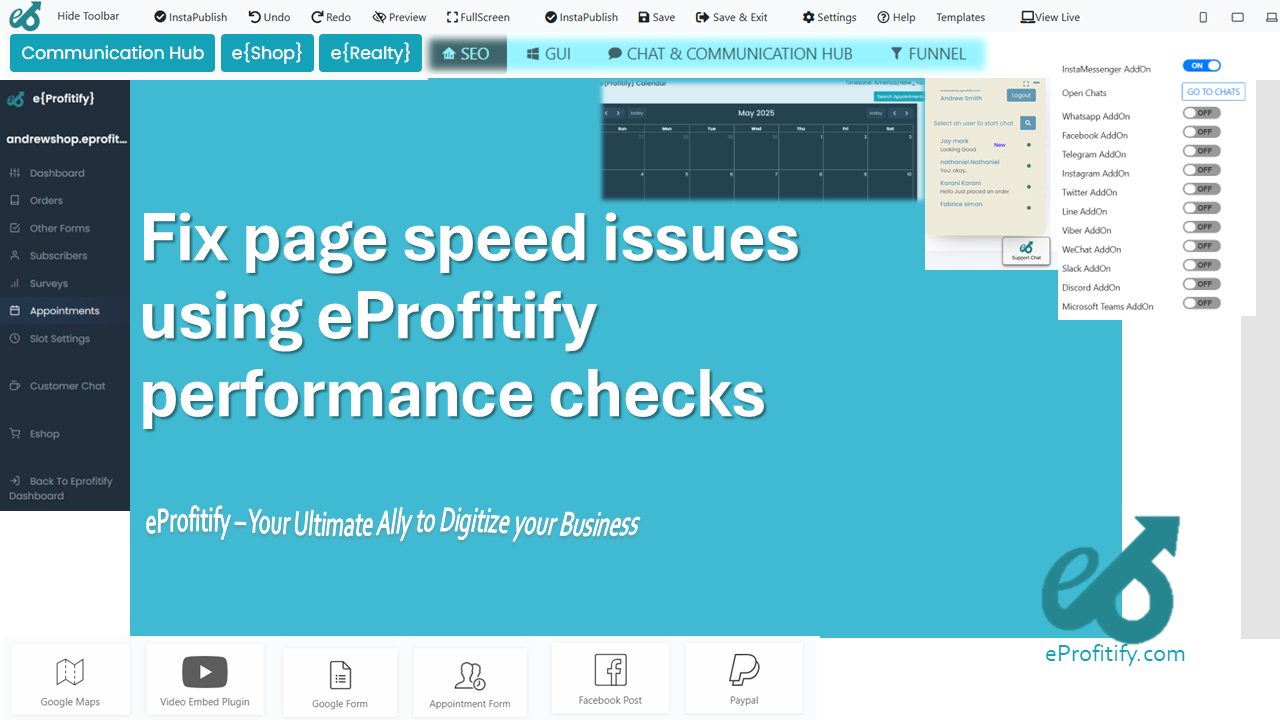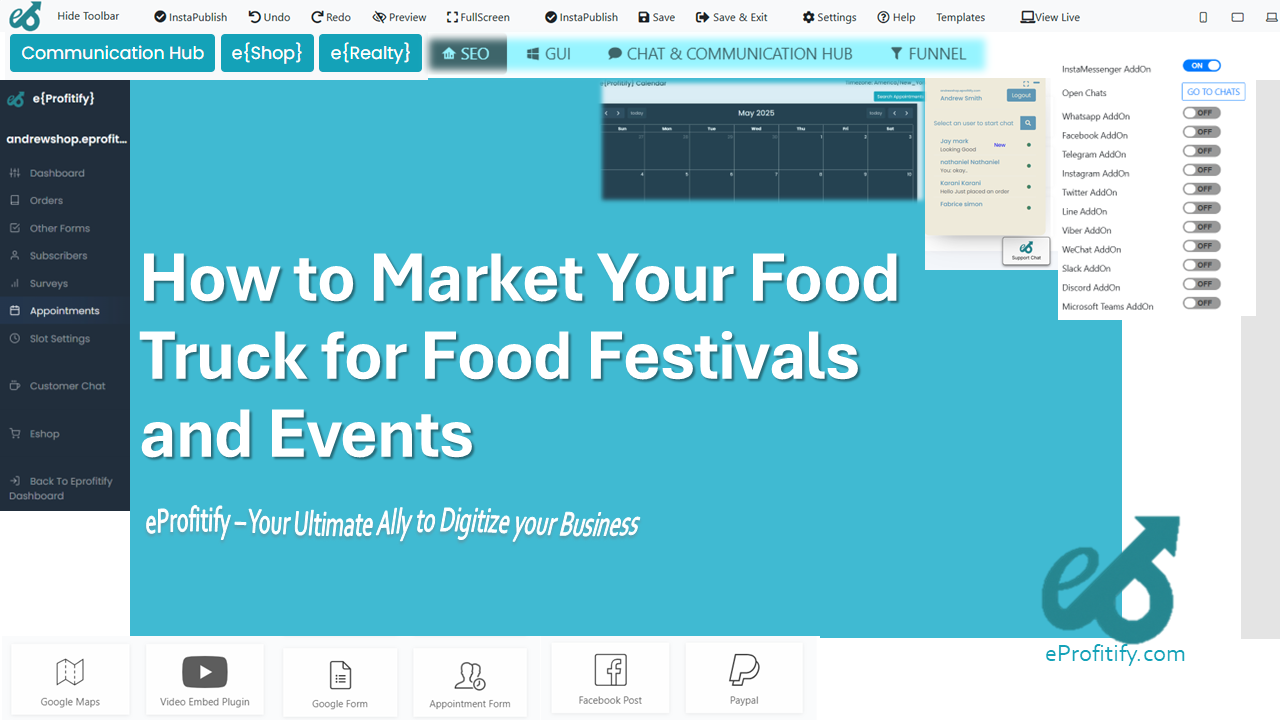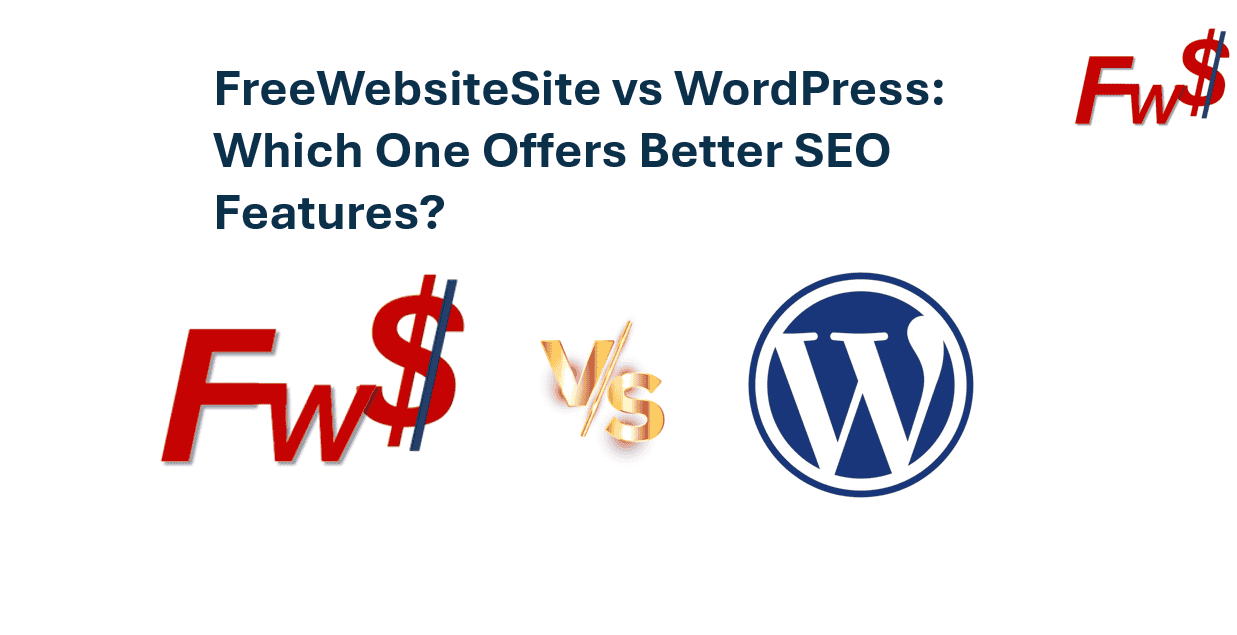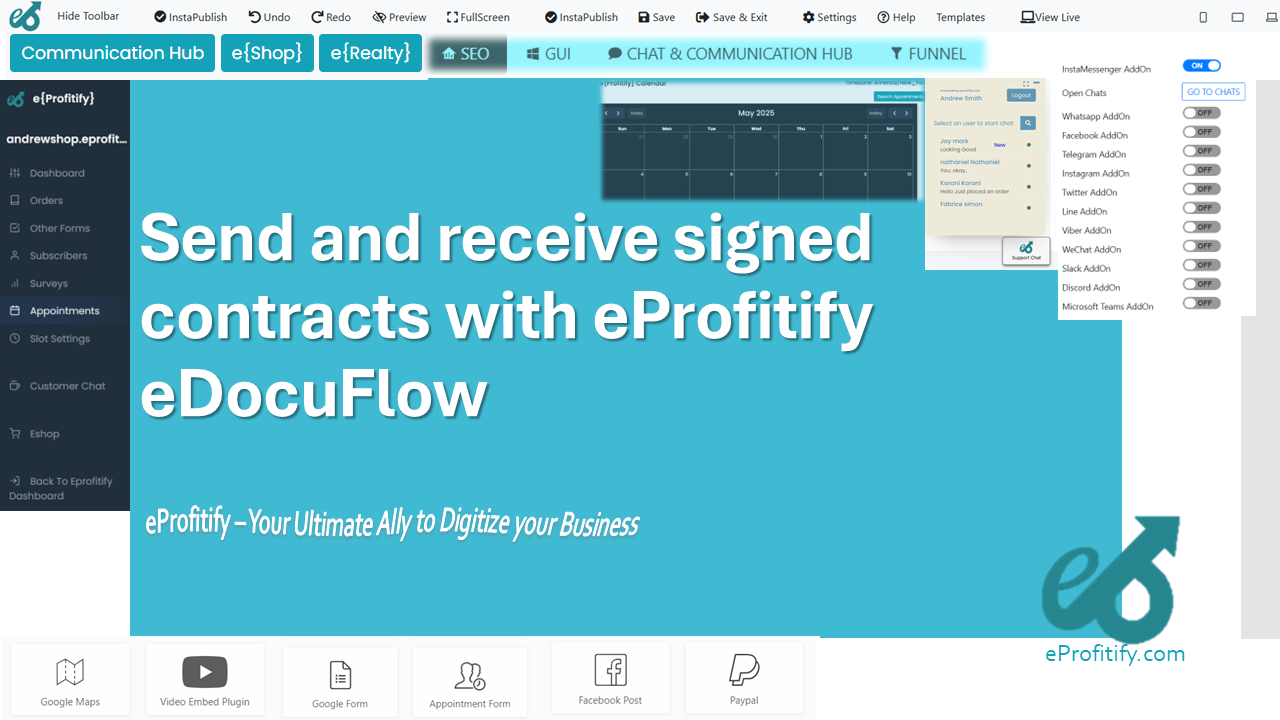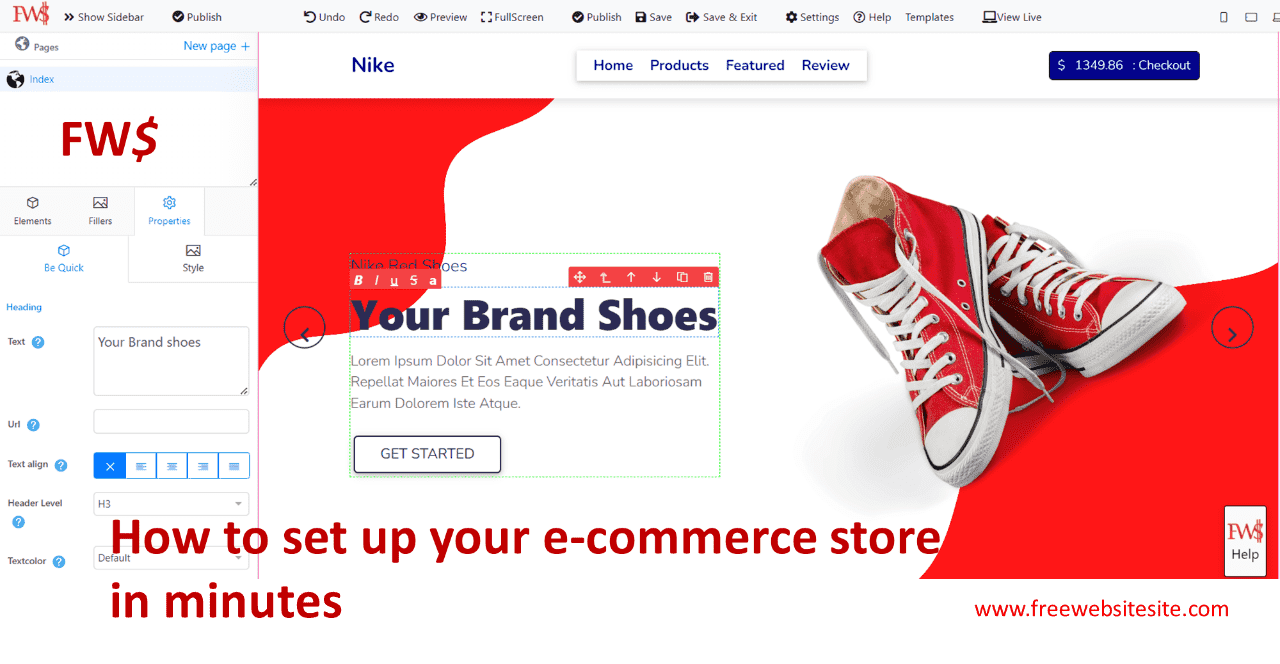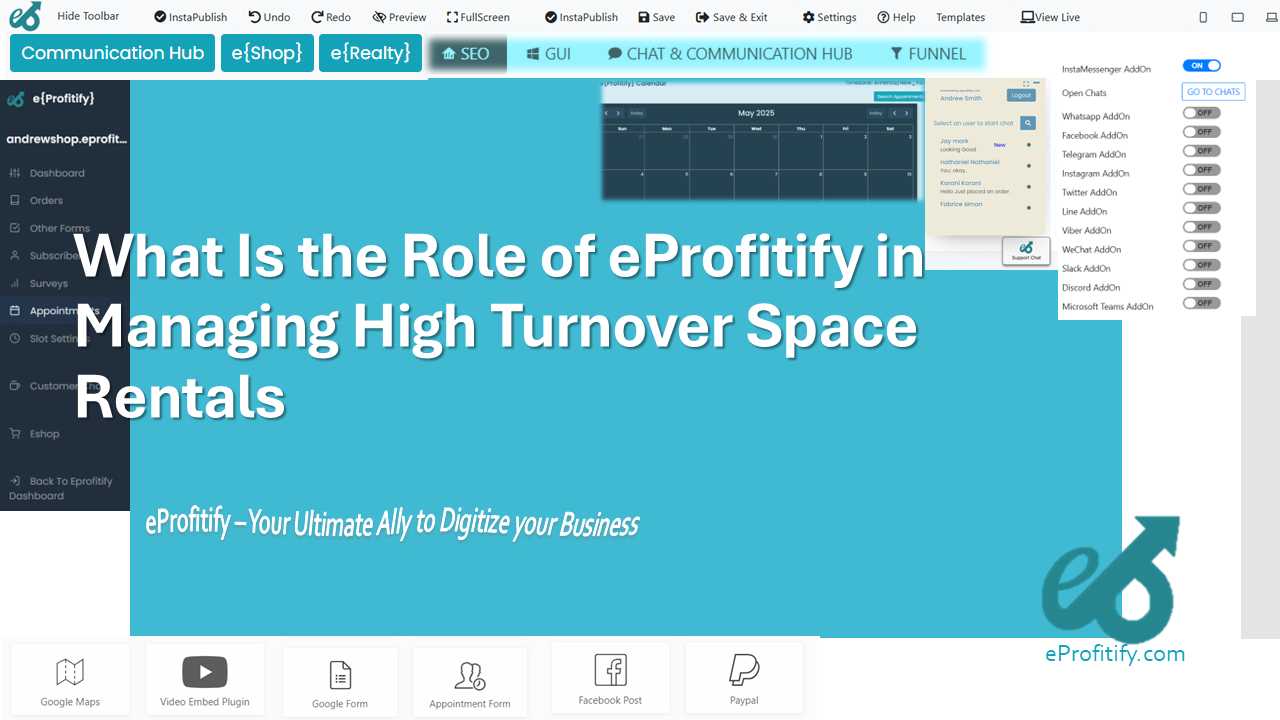AB Testing Ad Headlines vs Blog Headlines
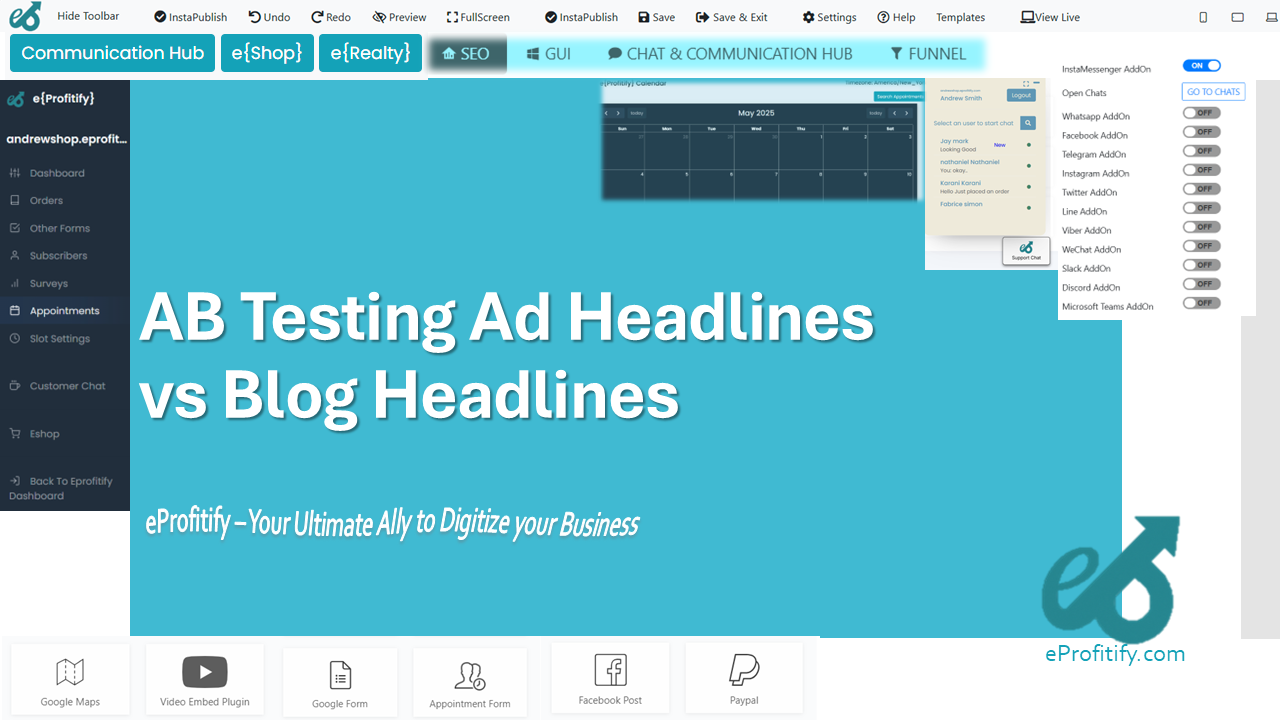
Schedule a LIVE Zoom call with an eProfitify Expert.
A/B Testing Ad Headlines vs. Blog Headlines: Maximizing Impact with Data-Driven Decisions
Headlines are the gatekeepers of engagement. Whether in ads or blogs, they determine whether a user clicks, reads, or scrolls past. A/B testing is the cornerstone of optimizing these headlines, but the strategies differ significantly between advertising and blog content. This article explores the nuances of A/B testing for ad headlines versus blog headlines, supported by statistics, and highlights how eProfitify—a leading website publishing and management platform—empowers businesses to execute these tests efficiently.
A/B Testing Ad Headlines: Driving Clicks and Conversions
Ad headlines operate in a high-stakes, quick-paced environment. Their primary goal is to capture attention within seconds and compel users to take action, whether clicking a link, purchasing a product, or signing up for a service. A/B testing ad headlines focuses on variables like clarity, urgency, and value proposition.
Key Metrics for Ad Headlines
- Click-Through Rate (CTR): The percentage of users who click an ad after seeing it.
- Conversion Rate: The percentage of clicks that result in the desired action (e.g., sale, lead).
- Cost Per Acquisition (CPA): The cost of acquiring a customer through the ad.
Statistics:
- According to WordStream, A/B testing ad headlines can improve CTR by 20–30%.
- Unbounce reports that 40% of marketers see a “significant improvement” in conversions after A/B testing ad copy.
- Ads using power words like “Free” or “Now” see up to 14% higher CTR, per HubSpot.
For example, an ecommerce brand might test “Get 50% Off Today Only!” against “Limited Stock: Shop Half-Price Deals!” to identify which urgency-driven headline resonates more with its audience.
A/B Testing Blog Headlines: Boosting Traffic and Engagement
Blog headlines aim to attract organic traffic, encourage readership, and improve SEO rankings. Unlike ad headlines, they must balance curiosity with clarity to ensure the content delivers on its promise. A/B testing here often revolves on readability, keywords, and emotional appeal.
Key Metrics for Blog Headlines
- Organic Traffic: Visits from search engines.
- Bounce Rate: The percentage of users who leave after viewing only one page.
- Social Shares: Indicates content’s shareability.
- Time on Page: Reflects engagement depth.
Statistics:
- Blog headlines with numbers (e.g., “7 Ways to…”) generate 36% more clicks, per Backlinko.
- Headlines posing questions (e.g., “Why Do…?”) achieve a 14% higher CTR than declarative headlines.
- Content with “how-to” headlines receives 3x more shares on social media (BuzzSumo).
For instance, a SaaS company might test “10 Tools to Automate Your Workflow” against “How to Save 10 Hours a Week with Automation” to determine which aligns better with its audience’s search intent.
Ad vs. Blog Headline Testing: Key Differences
- Purpose:
- Ads prioritize immediate action; blogs focus on long-term value and SEO.
- Testing Duration:
- Ad tests run shorter (days/weeks) due to budget constraints; blog tests may take weeks/months to gauge SEO impact.
- Audience Targeting:
- Ads target specific demographics; blogs attract broader audiences through keywords.
- Tools and Platforms:
- Ad platforms (Google Ads, Meta Ads) offer built-in A/B testing, while blog testing relies on tools like Google Optimize or WordPress plugins.
eProfitify: Streamlining A/B Testing Across Ads and Blogs
eProfitify emerges as a game-changer for businesses managing A/B tests for ads, blogs, and beyond. As an all-in-one website publishing and management platform, it integrates tools tailored for modern marketers:
- Unified Analytics Dashboard: Track ad CTR, blog traffic, and conversion metrics in one place.
- Instant Messaging: Collaborate with teams in real time to brainstorm headlines or review test results.
- Appointment Management: Schedule content updates or ad rotations based on test outcomes.
- Ecommerce Integration: Link headline performance to sales data, measuring downstream revenue impact.
- CRM Sync: Segment audiences and personalize headlines based on customer behavior.
For example, a retail brand using eProfitify can test Facebook ad headlines while simultaneously analyzing how blog headlines affect product page visits—all within a single platform. This synergy reduces workflow friction and accelerates data-driven decisions.
Conclusion
A/B testing headlines is not a one-size-fits-all process. Ad headlines thrive on urgency and brevity, while blog headlines demand SEO-rich, value-driven phrasing. Platforms like eProfitify elevate this process by merging testing capabilities with CRM, analytics, and collaboration tools, ensuring businesses stay agile in optimizing their digital presence. By leveraging data from both ad and blog experiments, brands can craft headlines that not only capture attention but also sustain engagement in an increasingly competitive landscape.
